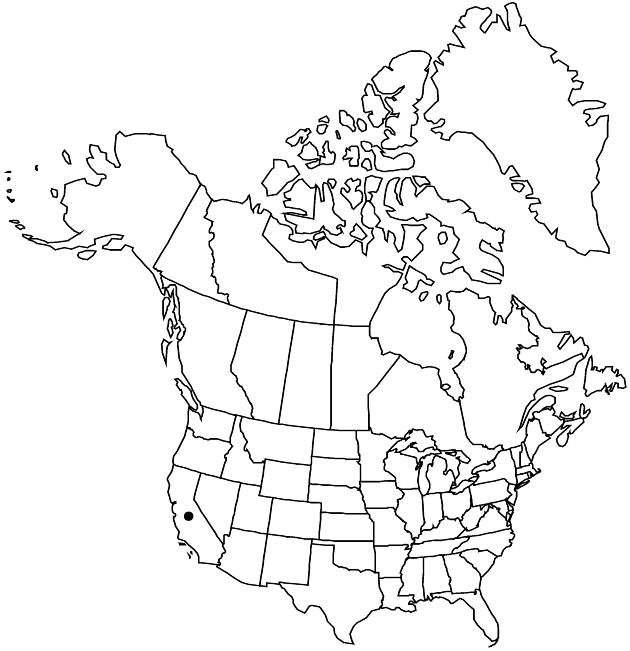Hulsea californica
in War Department [U.S.], Pacif. Railr. Rep. 6(3): 77. 1858.
Common names: San Diego alpinegold
EndemicConservation concern
Biennials or perennials, 40–120 cm. Stems (1–)3–10, leafy, lanate to woolly. Leaves basal and cauline; blades gray to grayish green, broadly oblanceolate to spatulate, 6–10 cm, margins undulate to weakly lobed, faces densely lanate; distal cauline leaves lanceolate to narrowly obovate, gradually reduced. Heads 2–5. Involucres broadly conic to hemispheric, 15–26 mm diam. Phyllaries 9–14 mm, outer lanceolate, apices attenuate. Ray florets 22–40; corolla tubes glabrous, laminae yellow, 9–12 mm. Disc corollas yellow. Cypselae 4–6 mm; pappus scales subequal, 1–2 mm. 2n = 38.
Phenology: Flowering late spring–summer.
Habitat: Often common after fires, open sites in chaparral and woodlands, mostly rocky, metamorphic soils
Elevation: 1000–2000 m
Discussion
Of conservation concern.
Hulsea californica grows in the eastern Peninsular Ranges, San Diego County.
Selected References
None.
Lower Taxa
None.
